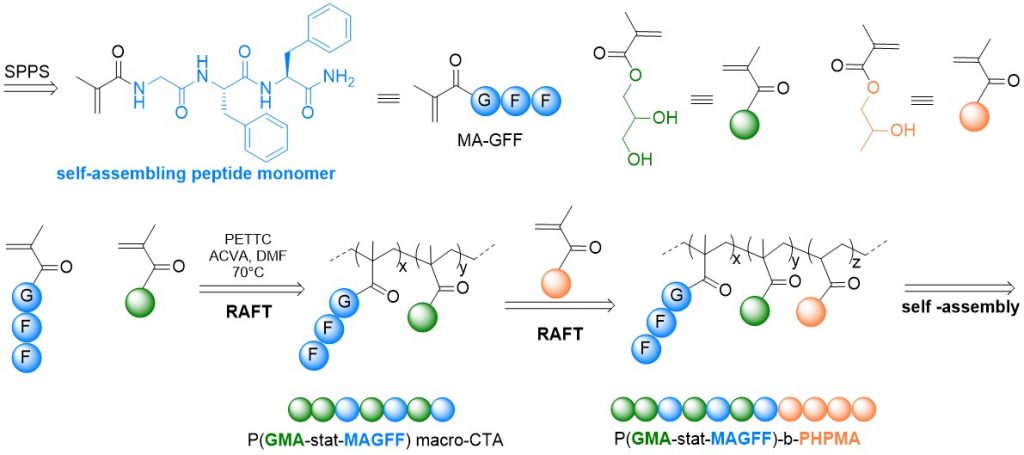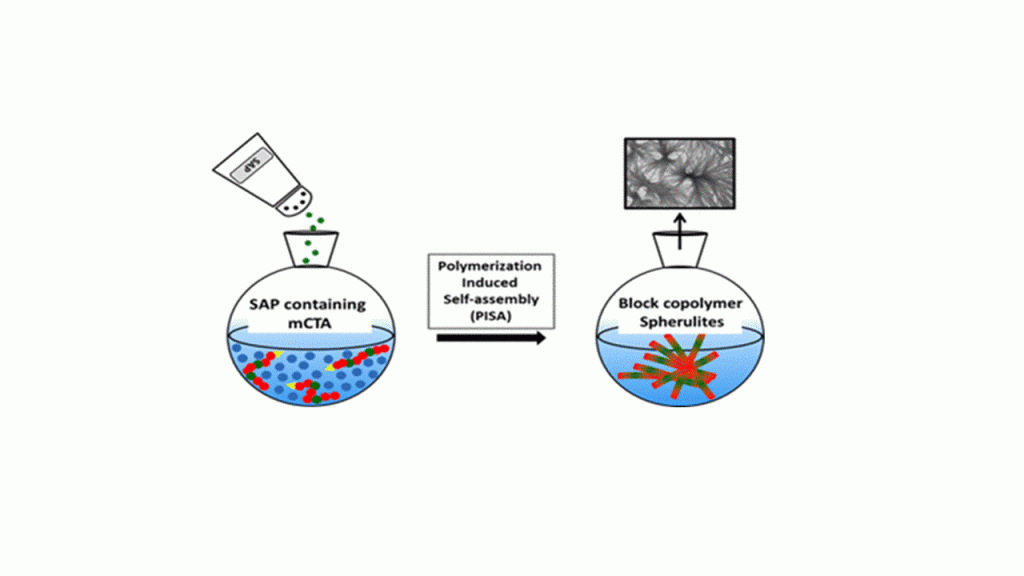

Polymerization-Induced Self-Assembly (PISA) concept is based on the chain extension of homopolymers with a co-monomer to yield asymmetric block copolymers. During the chain extension with the second block, self-assembly is induced by the insolubility of the second block in the polymerization solution.
Self-assembling peptides (SAP) are a category of peptides, which undergo spontaneous assembling into ordered nanostructures.
In collaboration with ICGM and IEM institutes were the first to combine both strategies in order to obtain Self-Assembling Peptide—Polymer Nano-Objects via Polymerization-Induced Self-Assembly or SAP-PISA. In a first time SAP-PISA allowed us to obtain a range of original morphologies and macro architectures.
The way is open now for more structural exploration as well as for applications such as drug delivery.
Check more @
Self-Assembling Peptide—Polymer Nano-Objects via Polymerization-Induced Self-Assembly, Dao, L Vezenkov, G Subra, M.Amblard, M In, J-F Le Meins, F Aubrit, M-A Moradi, V Ladmiral, and M. Semsarilar* Macromolecules 2020, 53, 16, 7034–7043, https://doi.org/10.1021/acs.macromol.0c01260
Nano-assemblies with core-forming hydrophobic polypeptide via polymerization-induced self-assembly (PISA), T Dao, L Vezenkov, G Subra, V Ladmiral, M Semsarilar, Polym. Chem., 2020, Advance Article, DOI: 10.1039/D0PY00793E

